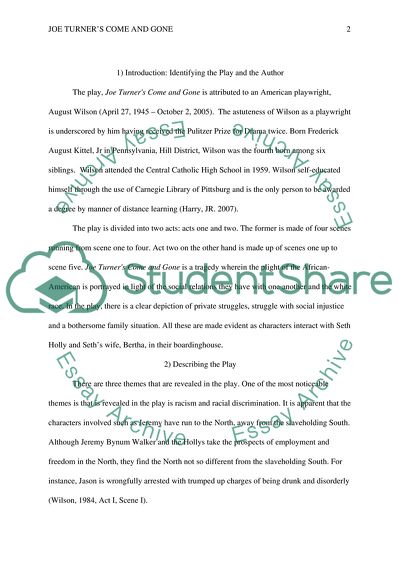Cite this document
(Discussing the Artistic Merits of the Joe Turners Come and Gone Book Report/Review, n.d.)
Discussing the Artistic Merits of the Joe Turners Come and Gone Book Report/Review. Retrieved from https://studentshare.org/visual-arts-film-studies/1834242-literary-critique-of-the-play-joe-turners-come-and-gone
Discussing the Artistic Merits of the Joe Turners Come and Gone Book Report/Review. Retrieved from https://studentshare.org/visual-arts-film-studies/1834242-literary-critique-of-the-play-joe-turners-come-and-gone
(Discussing the Artistic Merits of the Joe Turners Come and Gone Book Report/Review)
Discussing the Artistic Merits of the Joe Turners Come and Gone Book Report/Review. https://studentshare.org/visual-arts-film-studies/1834242-literary-critique-of-the-play-joe-turners-come-and-gone.
Discussing the Artistic Merits of the Joe Turners Come and Gone Book Report/Review. https://studentshare.org/visual-arts-film-studies/1834242-literary-critique-of-the-play-joe-turners-come-and-gone.
“Discussing the Artistic Merits of the Joe Turners Come and Gone Book Report/Review”, n.d. https://studentshare.org/visual-arts-film-studies/1834242-literary-critique-of-the-play-joe-turners-come-and-gone.


